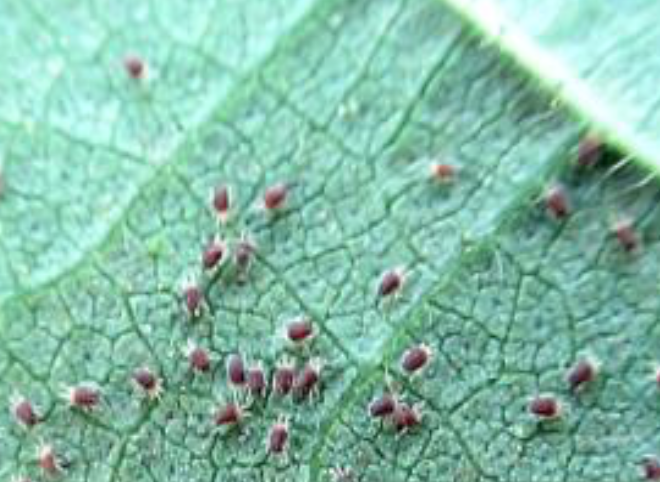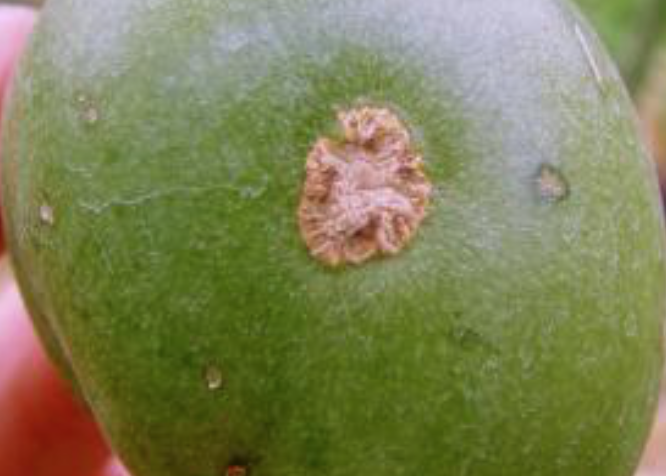Spider mites (Oligonychus spp.)
Credit: Biovision-Infonet

(c) O.P. Sharma, NCIPM, New Delhi. India, Bugwood.org

(c) A.M. Varela, icipe
Attack by spider mites (Oligonychus spp.) produce circular necrotic spots covered by dense webbing. As mite populations increase feeding causes leaf drop. These mites are more damaging to ‘Haas’ variety; ‘Fuerte’ variety is less affected.
Feeding by broad mites (Polyphagotarsonemus latus) causes leaf distortion. These tiny mites (0.1-0.2 mm long) cannot be seen with the naked eye, and are even difficult to detect with a hand lens. An attack by the broad mites can be detected by the symptoms of damage. Their feeding produces discolouration, necrosis and deformation of tissues.What to do:
- Conserve natural enemies. Mites are attacked by a range of natural enemies which can keep the pest under control provided that the natural enemies are not killed by application of pesticides.
- Wash the leaves with water using high-pressure hoses. This helps to reduce mite populations.
- Irrigate and fertilise adequately heavily infested trees to maintain the flush of new growth that occurs after leaf shed due to mite attack. However, care should be taken not to overfertilise trees to avoid promoting mite populations. Click here for more on spider mites